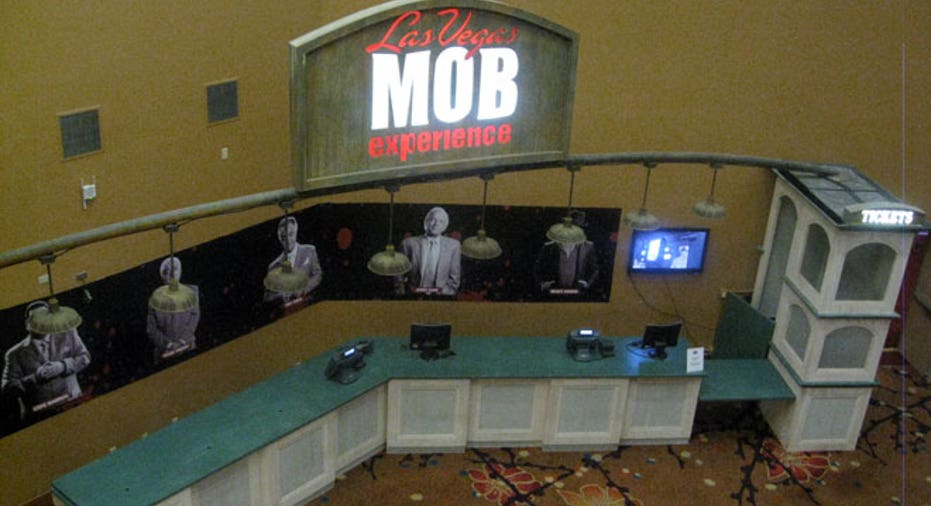Mob Museum is Quite a Racket

It's probably not a good idea to build a museum that venerates murderers, liars, thieves and extortionists.
The $25 million Las Vegas Mob Experience at the Tropicana opened in March and filed bankruptcy by October. It was supposed to draw 4,100 visitors a day. It now draws less than 150 a day. It had hoped to charge as much as $40 a ticket. It now charges $15.
The promoter who created this financial massacre has been ousted. Go figure: He called his company Murder Inc.
Lawsuits and counter lawsuits are flying. Investors and lenders claim mismanagement and misused funds. Contractors claim they weren't paid. And about 100 employees have been laid off, including the actors who played mobsters in role-playing exhibits.
"We may have kicked the Mob out of town, but that doesn't mean we don't have our share of hoodlums, losers and harebrained schemes," mused a writer for the Las Vegas Sun, which is in a cross-promotional agreement with the museum. "Maybe it's secretly a "Sopranos" episode in the making."
The museum hobbles along in Chapter 11, its square footage reduced from 26,000 to 11,000 square feet, its high-tech interactive exhibits removed. Yet it remains a shrine to sociopathic personality disorder and unabashed criminality.
The museum boasts "a world-class collection of over 1,000 mob artifacts and memorabilia including personal items belonging to many famous mobsters such as Benjamin "Bugsy" Siegel, Meyer Lansky, Sam Giancana, Tony Spilotro, Charles "Lucky" Luciano, Mickey Cohen, and many others who help shape the Las Vegas of today."
When I strolled through, I got see their jewelry, shoes, neckties, suits, golf clubs--heck, even their pajamas. I saw a lot of old furniture and a recreation of Siegel's living room. And once in a while--amid all this mundane household clutter--I found a revolver thrown in as a reminder of what these finely dressed men actually did for a living.
A display upon entering warns: "No matter the consequences, if you told the Mob's secrets to the police, you were a dead man -- the Mob would make sure of that."
The parts of the museum that are now closed included a role-playing game where visitors who follow the Mob code "get made" and those who do not "get whacked." But still open is the predictably overpriced gift shop with Mob-branded hats, T-shirts, shot-glasses and bottle openers.
My favorite feature of the museum was a red button you push to hear Lansky whine about losing the Las Vegas racket to major banks and corporations.
"The legitimate swindlers were watching us all the time," he said, "waiting for the thing to stabilize itself, waiting like the vultures wait, like the bankers wait for a scientist to produce a product that when it's proven, they move in, never taking a chance with their own money."
"Here, the big corporations, who get their money from the poor people and the stock market and Wall Street--never give them anything much in return--they moved in and bought the thing at a good profit."
I suppose it is human nature for a conquering culture to eventually build a museum to preserve remnants of the vanquished culture.
That's why we have Native American museums. That's why Hitler once collected relics from Jewish temples. And that's why there will soon be a new Mob Museum in town.
The $42 million Museum of Organized Crime and Law Enforcement is scheduled to open in February.
(Al's Emporium, written by Dow Jones Newswires columnist Al Lewis, offers commentary and analysis on a wide range of business subjects through an unconventional perspective. The column is published each Tuesday and Thursday at 9 a.m. ET. Contact Al at al.lewis@dowjones.com or tellittoal.com)